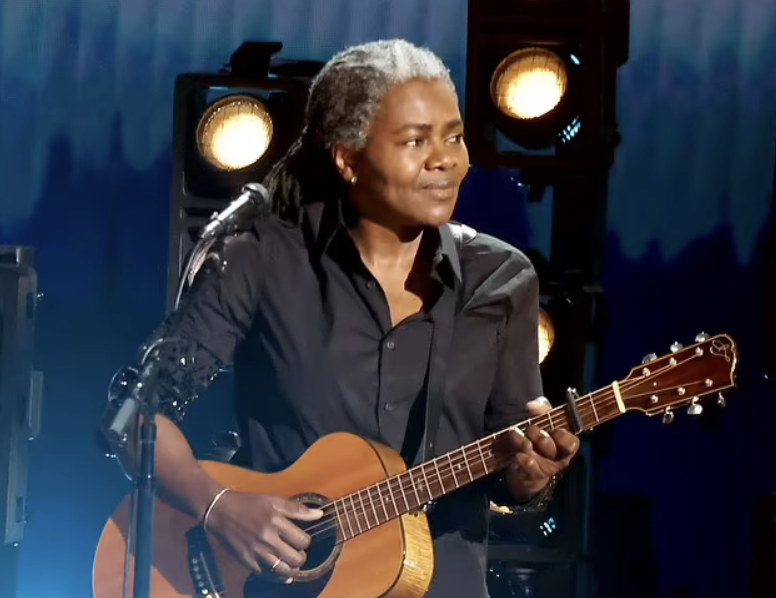BLACK HISTORY MONTH
The New Faith by Jake Blount

The New Faith is on Smithsonian Folkways Recordings as part of their African American Legacy series
black history month
The first post in Black History Month this year looks at the work of performing musician and ethnomusicologist Jake Blount who lives in Providence, Rhode Island.
He brings deep musical knowledge, a progressive, biracial and queer perspective to his music which is built on folk traditions. As a scholar he has made a couple of mini-documentaries and has published essays in a variety of magazines. A very special man!
- TWO SONG VIDEOS on YouTube:
Once There Was No Sun
Didn’t It Rain - PLAYLISTS on YouTube and Spotify
- LIVE
NPR Tiny Desk Concert - MORE RESOURCES BELOW
Links to album reviews, Blount essays, mini-docs and interviews

Besides picking a mean banjo, musician, ethnomusicologist and a founder of Bluegrass Pride, Jake Blount explores Black music with deep knowledge of its structures and traditions as well as the “whitewashing” of its history. (Tadin Brego Photo)
ONCE THERE WAS NO SUN
An Afrofuturist take on climate change tells a cautionary tale and gives new life to old Black spirituals
“The New Faith, is an Afrofuturist story that explores what traditional Black folk music might sound like post-climate crisis,” says Jake Blount about his acclaimed second solo recording. “My idea for this album was to make a field recording from the future. It lets me go backward and forward in time, at the same time.”
There’s a lot packed into that idea. As a scholar and musician, Blount (pronounced blunt) wants us to understand the cautionary tale behind his dystopic narrative: 30 Black and Brown descendants of refugees from the South are searching for a more stable climate in an island off New England. They find inspiration in their shared musical heritage adopting it as their new religion – ie. The New Faith. He frames the concept album’s telling on Black writer Octavia Butler’s 1993 Afrofuturist-themed book, The Parable of the Sower.
Using her work as a template, he presents the album’s songs in three movements each one a psalm opening with a spoken word parable followed by Black spirituals and revered blues pieces. The lyrics for all 12 songs are unchanged, but Blount creates vibrant new arrangements, rhythms and musical context for them, subtly incorporating elements of hip hop and disco in some while firmly embraced in the traditional sounds of banjo, violin, hand claps and foot stomp percussion
In a seven-minute mini-documentary titled Jake Blount on the Inspiration Behind ‘The New Faith’, he discusses how the lyrics have renewed relevance which ace NPR reviewer Jewly Hight calls “the prophetic evolution and afterlife of the old songs.”
“I think one thing I’ve always wanted to do with these old songs is to show that there’s subtext behind what is obvious, that it’s not always just ‘”it’s a spiritual, so it’s about Jesus”‘. There’s something else in there that they were trying to share and that was the best way they could do it.”

Blount and band play the NPR Tiny Desk at the beginning of January.
The Music
“Folk music functions best when it uses the past to feed the present and inspire the future,” says music journalist Grayson Haver Currin in his 2015 essay Way Past Pleasant: A Guide to Psychedelic Folk.
Jake Blount’s take is the same: “Folk music can be so oriented on thinking about what has been done before that people don’t devote time to what it’s going to look like going forward,” he told The Guardian last fall. “This music can’t stay fossilised.”
One of the triumphs of The New Faith is, as Blount says, it allows him to go “backward and forward in time, at the same time.” The story is about an imagined future but it’s told through Black spirituals and blues songs – some written a century ago and longer – whose themes and struggles are age-old.
The opening song is blues standard Take Me to the Water made popular by Bessie Jones in the mid-60s and refers to biblical scripture. The second song, The Downward Road, features additional lyrics written by Blount and rapped by Demeanor. This interlude is smoothly integrated sounding perfectly in place. Demeanor is Justin Harrington from North Carolina and a nephew of Rhiannon Giddens, a well know musician and academic who Blount studied under.
The third song, Didn’t It Rain, is another biblical spiritual about Noah’s flood written in the early 20th century and made famous in the 40s and 50s by Sister Rosetta Tharpe and Mahalia Jackson. It opens with ominous strings and is punctuated by searing electric guitar and includes Canada’s Kaia Kater in the background vocals.
Other familiar songs and musicians include Death Have Mercy which borrows from O, Death by Ralph Stanley and made popular on the O, Brother Where Art Thou soundtrack. Again Demeanor’s rap adds a contemporary edge to the piece as does a disco-style bass line. They Are Waiting for Me is a Skip James song and Just As Well To Get Ready, You Got to Die is by Blind Willie McTell.
The expansive Once there Was No Sun is also from Bessie Jones and closes the album on a rousing note. The original was recorded in 1961 by Alan Lomax in his apartment as part of his field recordings of 20th century folk songs. (You can hear the original here.)
Blount tells Uncut writer Rob Hughes the song made the project’s purpose clear. He’d found the “pulse of what I set out to do”.
He gives the piece an upbeat Appalachian feel with swelling strings and complex rhythms.
“Once There was No Sun is this majestic song about the music of the spheres and whatever else. So I was like, “OK, this has to be big” It was a powerful moment to be able to bring all those things together and feel like I was at the cutting edge of what I could do.”
(ED. NOTE: The section above on Music is based on an excellent article and interview by Uncut reviewer Rob Hughes in the October, 2022 issue. Unfortunately the article is unavailable online.)

What’s Afrofuturism?
A movement that imagines building a better world with people of the African diaspora playing a central role, Afrofuturism is social, political and cultural.
Blount isn’t the first Black musician to explore the theme. Janelle Monáe, Sun Ra, Labelle, Outkast, Parliament-Funkadelic and Beyoncé – to name a few – have all referenced it in their work. Blount, however, sets himself apart. The future he creates on The New Faith doesn’t rely on the futuristic, technological solutions common to the genre.
“I believe our most likely future bears a close resemblance to our past,” he writes in the album’s liner notes. “My vision of civilization’s course does not involve glittering ships hurtling through the cosmos.”
Racial and Environmental Struggles
The following is an excerpt from Blount’s 2022 mini-documentary, On the Inspiration Behind ‘The New Faith’.
“I think that racial and environmental struggles have always been deeply intertwined especially here on colonized soil in the Americas. And I think when you look at the legacy of colonialism across the world, you realize that the racist ideology that led people to come here and say I can just mow down everybody between me and the west coast and just take it because the church said I could, or the king said I could, or the president said I could.
“That’s what set us up for wild fires eating all of California. It’s what’s set us up for so much of the damage that’s taken place. You look at the places where we put people. Where are those indigenous communities presently confined to. Where are Black people living? You look at who’s living in Cancer Alley in Louisiana, who is suffering the cost and you look at the forecasted damage that climate crisis (and) climate change is expected to do over the years, whose islands are sinking, whose countries are going to disappear … who will be displaced by wildfires, by desertification?
“There’s so much coming. And in all of these things as in all the things in the past, the Black and Brown people of the world are going to bear the brunt of it.”
Awards and Accolades
Blount received the 2020 Steve Martin Banjo Prize, and is a two-time winner of the Appalachian String Band Music Festival. He has performed at the Kennedy Center, the Newport Folk Festival and numerous other venues across and beyond the U.S.
His scholarly work has been presented at the Smithsonian Institution, Berklee College of Music and Yale University. His essays have been published in Paste Magazine, Rolling Stone, No Depression, and NPR Music.

Resources: Blount Getting the Word Out
As an educator with a degree in ethnomusicology, Blount is a clear speaker and advocate.
He told the LA Times, “If I just play the songs and take the attitude that I don’t need to explain anything else, just out of laziness, a lot of people are going to wind up retelling the same warped and distorted and revised histories.
“That’s a big part of my thought process. How can I welcome in other people like me who don’t know that this belongs to them?”
He lectures, writes and rarely misses an opportunity to discuss the true history of Black music. In so doing he shares his queer and biracial perspective on how a white and heteronormative society has “whitewashed” the origins as music of struggle by an oppressed and disenfranchised people.
Here are a few resources where you can see and hear Blount speak, read three of his essays as well as an interview and a few reviews of The New Faith recording:
ESSAYS BY JAKE BLOUNT
NO DEPRESSION MAGAZINE: Traditional Music’s Built-In Science Fiction
ROLLING STONE MAGAZINE: Is It Too Late To Make the Music Industry Sustainable?
PASTE: The Insidiousness of “Afro-Americana”
MINI-DOCUMENTARIES
Jake Blount on the inspiration behind ‘The New Faith’ (7 mins)
Why this instrument explains Black American Folk Music (9 mins)
REVIEWS
NPR MUSIC: The New Faith is a cautionary, clarifying Afrofuturist Tale
THE GUARDIAN: Afrofuturism for the apocalypse
POP MATTERS: Transforming Old Tradition Into The New Faith
THE TELEGRAPH: Deeply and spiritually moving
ROLLING STONE: #15 Best of Country and Americana
JAKE BLOUNT
WEBSITE and INSTAGRAM
Kurated is a music sharing project.
Listen in!

04 February 2022





